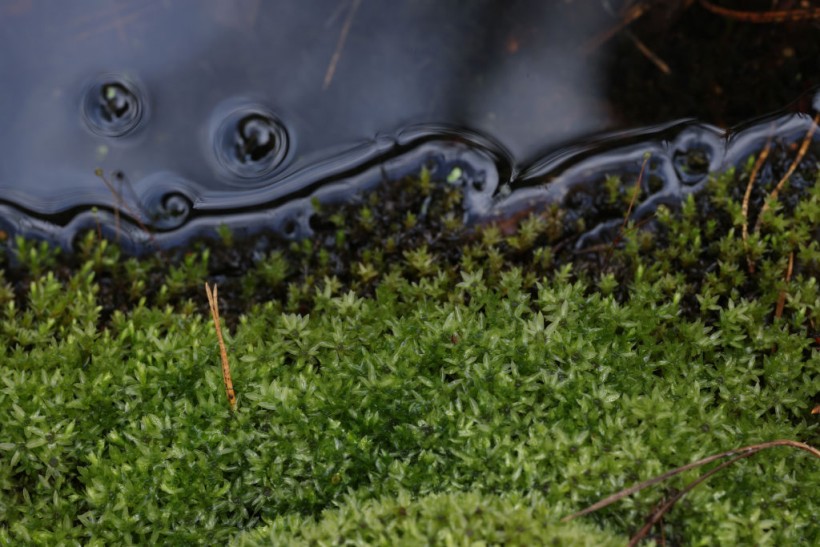When people think of extraordinary plants, they usually don't pay much attention to moss.
It blends in with the green background of plant life and seems to grow everywhere - whether you want it to or not.
But this group of plants, which actually comprises between 12,000 and 15,000 species, is astonishing. Their almost unique resilience allows them to grow practically everywhere on Earth.
They are helping scientists understand the evolution of life, and are one of the most ancient plant groups alive today.
A recent study by an Australian research team found that mosses are the lifeblood of habitats around the world, with plants and soil in better shape almost everywhere they grow. Despite their importance, mosses are often overlooked due to their diminutive size.
The smallest mosses, known as micromosses, measure only a few millimetres in length. Even the largest moss, Dawsonia superba, a species native to Australia, New Zealand and the Pacific Islands, only reaches heights of up to 50cm - a giant among mosses, yet still smaller than the average houseplant.
But in fact, mosses help hold up entire ecosystems.
Drivers of critical ecosystem services
 (Photo : Sean Gallup/Getty Images)
(Photo : Sean Gallup/Getty Images)

The contributions of mosses to the structure and function of modern ecosystems are often underestimated, lagging behind our understanding of more complex plants, as per Phys.org.
The Australian study examined mosses' relationship to their habitats in detail and found they are critical to soil health.
The researchers collected moss samples from ecosystems around the globe - from tropical rainforests to polar landscapes through to arid deserts.
Combining their findings from these samples with an analysis of previous research, their results showed that mosses are key players in every habitat in which they are found.
Mosses store huge amounts of carbon, help the soil nutrient cycle, and also the decomposition of organic matter.
Mosses can even come to the rescue in disturbed ecosystems. Research examining the area around the Mount St. Helens volcano following a devastating eruption in the early 1980s found mosses were among the first forms of life to reappear.
Mosses also provide shelter and food for many animals, such as insects, spiders and birds. Some animals even use mosses as building materials for their nests or burrows. For example, hummingbirds use mosses to camouflage their nests and keep them moist.
Also Read: Study: How Moss Helped in Making the Earth Habitable
Ancient ancestors
Mosses, along with liverworts and hornworts, are part of a group of plants known as bryophytes. These evolved more than 400 million years ago and still share many characteristics with the first plants to have emerged onto the Earth's land surfaces - their small size and lack of true roots, for example, as per The Conversation.
Mosses do not have vascular tissues that transport water and nutrients throughout the plant body. Instead, they rely on diffusion and osmosis to move substances across their cells. This limits their size and growth rate but also gives them an advantage in harsh environments where water is scarce or unpredictable.
Mosses also do not produce seeds or flowers. Instead, they reproduce by spores that are dispersed by wind or water. Some mosses can also reproduce vegetatively by breaking off fragments that can grow into new plants.
Mosses have a fascinating life cycle that alternates between two different generations: a haploid gametophyte that produces gametes (sperm and eggs), and a diploid sporophyte that produces spores.
The gametophyte is the dominant and visible stage of most mosses, while the sporophyte is usually attached to it and dependent on it for nutrition.
The gametophyte generation requires water for fertilisation to occur, as the sperm cells have to swim through a thin film of water to reach the eggs. This is why most mosses are found in moist habitats or grow during wet seasons.
The sporophyte generation produces spores inside a capsule at the tip of a slender stalk. The capsule has a lid that pops off when the spores are mature, releasing them into the air. The spores can then germinate into new gametophytes if they land on a suitable substrate.
Moss appreciation
Mosses are not only important for ecosystems and biodiversity, but also for human well-being. Mosses have been used for various purposes throughout history, such as insulation, bedding, wound dressing, food preservation and decoration.
Mosses can also inspire us with their beauty and diversity. Mosses come in many shapes, colours and textures, creating intricate patterns and carpets on rocks, trees and soil. Some mosses even glow in the dark or change colour depending on their moisture level.
Mosses deserve more recognition and appreciation for their role in nature and culture. They are not just simple plants that grow everywhere - they are ancient ancestors of all plants and vital for the health of the planet.
Related article: Ancient Moss Brought Oxygen and Life to Earth
© 2024 NatureWorldNews.com All rights reserved. Do not reproduce without permission.



![Roundworms with Short Memories 'Stop Forgetting' When Frozen or Given Lithium [Study]](https://1471793142.rsc.cdn77.org/data/thumbs/full/70295/280/157/50/40/roundworms-with-short-memories-stop-forgetting-when-frozen-or-given-lithium-study.jpg)

